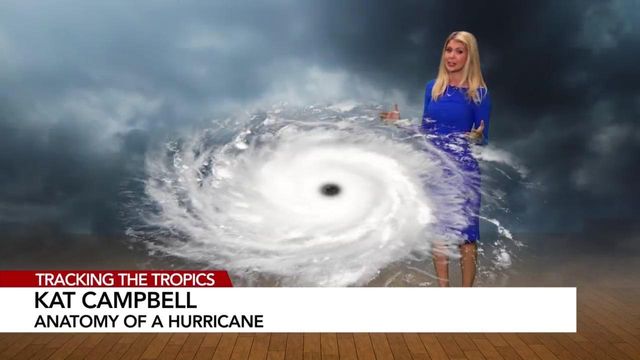Hurricanes come in all shapes and sizes
Every hurricane has its own unique characteristics.
Posted — UpdatedEvery hurricane has its own unique characteristics.
The anatomy of a hurricane involves its size, strength, eye wall, wind speed and much more. For example, Hurricane Maria was a powerful Category 5 hurricane. It devastated Dominica, the US Virgin Islands and Puerto Rico in 2017.
The hole you may see in the middle of the hurricane is called the eye. That’s where you’re going to find very peaceful conditions and maybe even some sunshine. Surrounding the eye is the most violent part of a hurricane.
The eye wall is where you find the strongest winds, 155 mph in this example. They are confined to a band that is just 15 miles from the eye. So wherever the eye makes landfall, that is where you get the most devastating damage.
Just outside the eye wall, there is another band of hurricane-force winds, just not quite as strong. They’re 55 miles from the eye. Here you’ll find winds sustained at 74 mph but not as strong as the eye wall.
The rest of this particular storm is primarily tropical storm-force winds. Those winds are 39 mph or stronger. They are 150 miles from the eye.
Where you are with respect to where the eye makes landfall makes a big difference. For instance, in the right front quadrant, the winds being generated by the storm are in concert with the forward motion. So you get the strongest winds there.
On the other side, the two are opposing each other. So the winds end up being a little bit lighter but still very strong.
No matter how you slice it, Maria was a big storm, a monster storm covering a huge area with lots of impact.
• Credits
Copyright 2024 by Capitol Broadcasting Company. All rights reserved. This material may not be published, broadcast, rewritten or redistributed.





